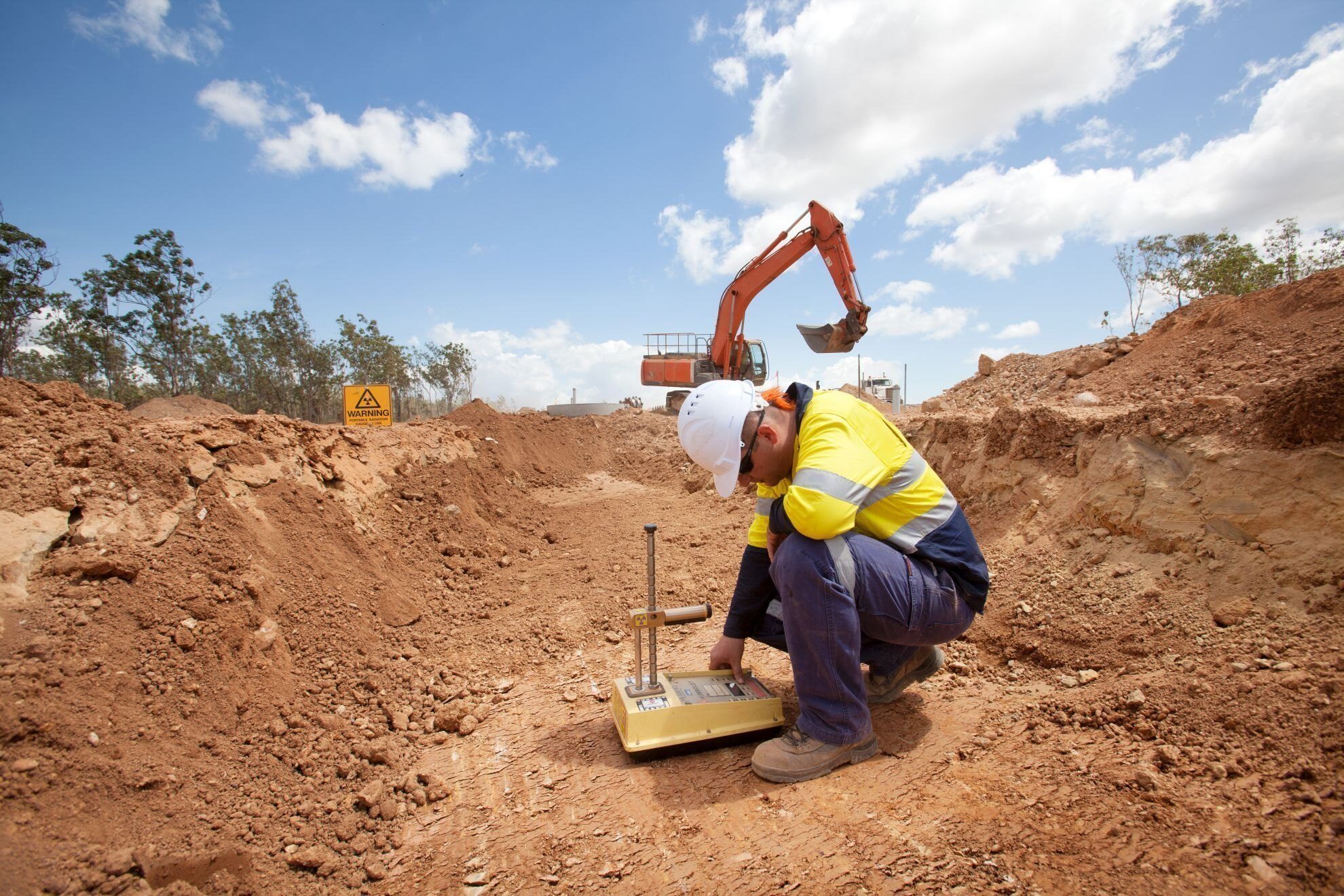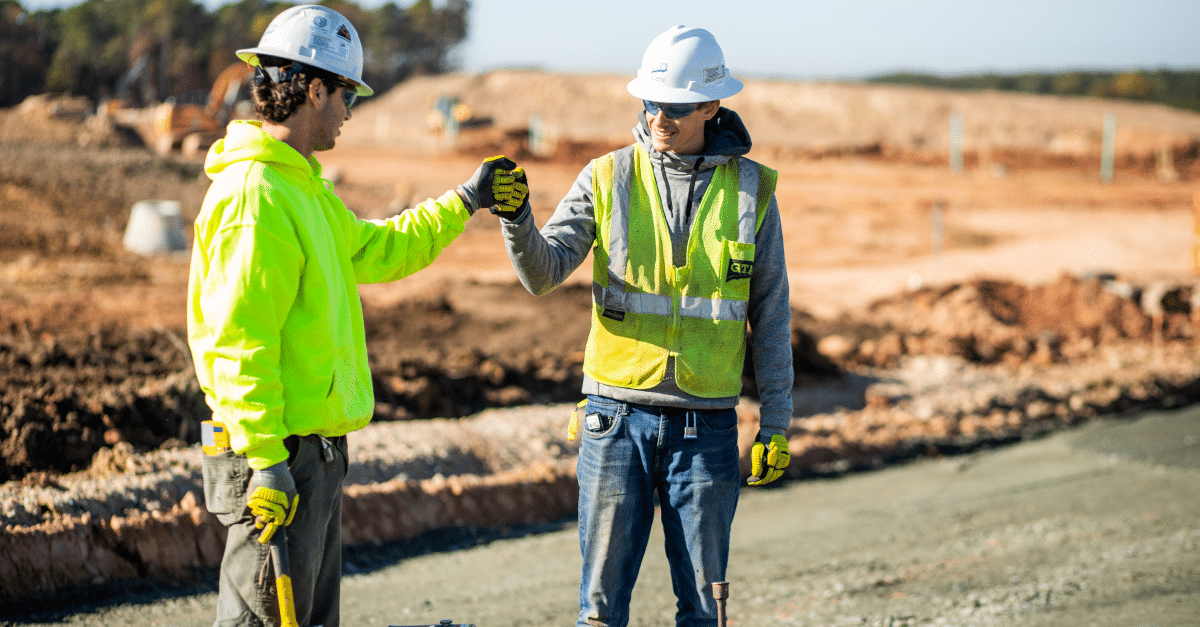An Unbiased View of Geotechnical Engineering For Construction Projects
The smart Trick of Geotechnical Engineering For Construction Projects That Nobody is Talking About
Table of ContentsNot known Facts About Geotechnical Engineering For Construction ProjectsEverything about Geotechnical Engineering For Construction ProjectsThe Best Guide To Geotechnical Engineering For Construction Projects5 Simple Techniques For Geotechnical Engineering For Construction ProjectsThe Only Guide for Geotechnical Engineering For Construction ProjectsSome Ideas on Geotechnical Engineering For Construction Projects You Should KnowAbout Geotechnical Engineering For Construction Projects
and Kovacs, W. (1981 ), An Introduction to Geotechnical Engineering, Prentice-Hall, Inc. Deep Scan Tech (2023 ): Deep Check Technology discovers hidden frameworks at the site of Denmark's highest building. "Geofrost Coring". GEOFROST. Obtained 20 November 2020. Han, Jie (2015 ). Principles and Practice of Ground Enhancement. Wiley. ISBN 9781118421307. RAJU, V. R.Ground Improvement Technologies and Case Histories. Singapore: Study Posting Providers. p. 809. ISBN978-981-08-3124-0. Ground Renovation Principles And Applications In Asia. Pariseau, William G. (2011 ). Layout evaluation in rock technicians. CRC Press. Hegde, A.M. and Palsule P (Geotechnical Engineering for Construction Projects).S. (2020 ), Efficiency of Geosynthetics Reinforced Subgrade Subjected to Repetitive Lorry Plenties: Speculative and Numerical Research Studies.
Cengage Discovering, Stamford, 666 p. Atkinson, J., 2007. The technicians of soils and foundations. The Observational Method in ground engineering concepts and applications.
Some Known Factual Statements About Geotechnical Engineering For Construction Projects
Research laboratory and field testing plays a vital function in this procedure. By drawing out samples from the earth's subsurface and using a collection of tests, geotechnical designers can predict the behavior of dirt layers and evaluate their viability for numerous building efforts. The significance of geotechnical design in civil engineering can not be overemphasized, attributable to numerous elements: The preliminary action in any geotechnical research entails determining the soil type at the building and construction site.
The structure acts as the bedrock of any kind of building and construction task. Choosing the proper structure kind is a decision that hinges on the comprehensive analysis supplied by geotechnical engineering.

Geotechnical site investigation is a crucial action in the preparation and execution of any building and construction task. It includes the collection and analysis of data related to the physical residential properties of dirt and rock below a proposed construction website. This details is crucial for the design and building and construction of risk-free, secure, and lasting structures.
Not known Facts About Geotechnical Engineering For Construction Projects
In this blog, we will look into the relevance of geotechnical site investigation, its different parts, and exactly how it profits building tasks. Geotechnical site examination, also understood as subsurface expedition, involves a series of activities targeted at identifying the dirt, rock, and groundwater conditions at a building site. The key goals are to determine potential geotechnical threats, analyze the engineering residential or commercial properties of subsurface materials, and offer suggestions for the style and construction of foundations, keeping walls, and various other frameworks.
The desk research study helps in recognizing potential geotechnical issues and preparing the succeeding fieldwork. This includes observing the topography, drain patterns, existing structures, plant life, and any kind of indications of instability or disintegration.
The smart Trick of Geotechnical Engineering For Construction Projects That Nobody is Discussing
Shallow test pits are dug deep into to directly observe and example the soil and rock. This approach serves for studying the upper layers of the subsurface and identifying near-surface hazards. Non-invasive geophysical approaches, such as seismic refraction, ground-penetrating radar (GPR), and electrical resistivity tomography (ERT), are utilized to map subsurface problems and spot abnormalities.
Dirt and rock samples gathered throughout the area examination go through research laboratory screening to determine their physical and mechanical residential properties. Common lab examinations include grain dimension evaluation, Atterberg limitations, compaction tests, triaxial shear tests, and consolidation examinations. These tests supply vital data for geotechnical evaluation and style. The information collected from the workdesk study, website reconnaissance, area investigation, and laboratory testing are assessed and translated to establish a thorough understanding of the subsurface conditions.
The primary advantage of geotechnical website examination is ensuring the security and stability of frameworks. By understanding the subsurface conditions, designers can create structures and various other architectural elements that can withstand the loads and environmental forces they will certainly undergo. This reduces the danger of negotiation, decrease, and architectural failing.
The Ultimate Guide To Geotechnical Engineering For Construction Projects
This makes sure efficient and risk-free construction techniques. Geotechnical site examinations are often called for by developing codes and guidelines.
This details is vital for job supervisors, architects, and professionals in developing sensible routines, spending plans, and backup strategies. Geotechnical Engineering for Construction Projects. Skyscraper in a Coastal AreaIn a coastal city, a high-rise residential building was planned on a site with thought loose sand deposits and a high water table. A thorough geotechnical investigation, including borehole drilling, CPT, and geophysical surveys, was performed
Facts About Geotechnical Engineering For Construction Projects Revealed
Based on these findings, the foundation design was changed to consist of deep pile structures prolonging into secure strata, and ground enhancement techniques, such as vibro-compaction, were implemented to alleviate liquefaction risks. This aggressive technique guaranteed the safety and security right here of the building while preventing costly post-construction remediation. Infrastructure Growth on a Sloping TerrainA significant facilities task, including the building and construction of a freeway and bridges, was intended on a hilly surface with steep slopes.

The Leaning Tower of Pisa (Italy), a famous architectural marvel, is infamous for its unintentional tilt from considerable geotechnical problems. The tower's foundation was additional info improperly created to take care of the soft, unstable soil under it, resulting in irregular negotiation and its unique lean. Our globe is dotted with impressive framework projectsfrom looming high-rise buildings to sprawling bridgesall standing testament to the development of the various building and construction devices and methods offered.
Geotechnical design is a specialized area within civil engineering that concentrates on examining the actions of earth products. This branch delves deep right into the groundinvestigating how the dirt, rock, and groundwater at a construction site can influenceand be influenced bythe framework that we put up on and right into them. Before a single brick is laid or a concrete foundation poured, geotechnical designers probe right into the earthgathering critical data about the site's soil structure, rock framework, and groundwater degrees.
More About Geotechnical Engineering For Construction Projects

is a device used to analyze the integrity and load-bearing capability of heaps during installment, leveraging the principle of wave proliferation. It optimizes building and construction efficiency by providing real-time evaluations, thus ensuring secure and reliable heap structures. One of the useful applications of geotechnical engineering involves deciding and executing the appropriate approaches for structure building.
Pile driving represents even more than the plain act of placing architectural components into the ground. However, it is a very carefully managed process of moving a structure's load past the much less steady soil layers closer to the surfacedown to the more significant strata that exist below. When it comes to pile driving, take into consideration exactly how geotechnical look at here now engineers adeptly utilize this strategy to evenly disperse the framework's weight.